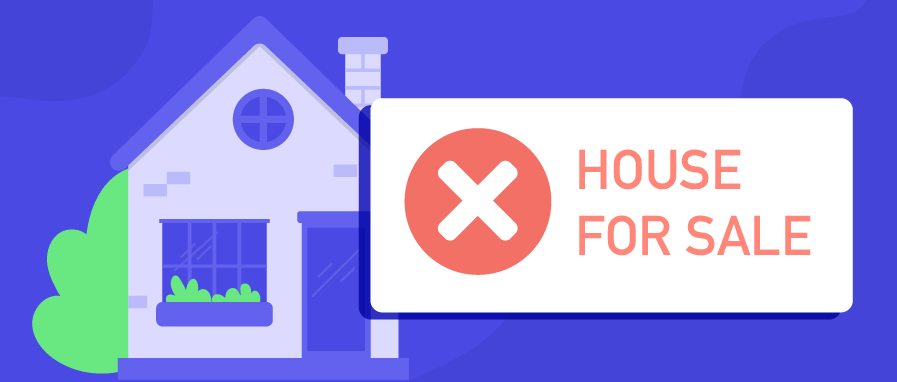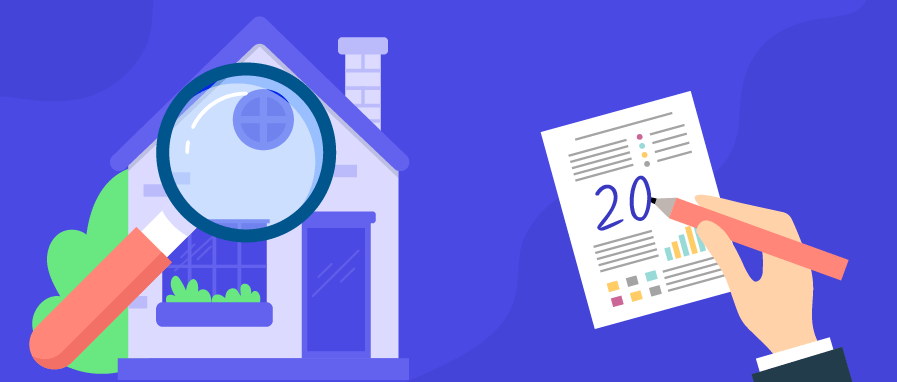Energy Loans: Finding Energy Efficiency Financing Options
It goes without saying that making your home more energy efficient is a great idea. But the lower energy bills and improved year round comfort do come with upfront overhead costs that turn off many homeowners. Thankfully, there’s a way to take some of the financial bite out of going green: energy loans.
At first glance, most energy efficiency financing options seem complicated… perhaps even debilitatingly so. Weaving the already-complicated home loan and mortgage system with government bureaucracy seems fairly headache inducing. Is it really worth it in the end?
The good news is that energy loans aren’t nearly as complicated as they seem at first glance. With the right lender, you should be able to navigate all of the legalese that obfuscates the facts and makes all of this seem so complicated.
Whether you’re buying a new or old home, remodeling your existing home, or selling your property, there are energy efficiency financing options available that can help you
- — Greenify your home
- — Increase your property value,
- — Reduce your monthly expenses
- — Enhance your quality of life
Let’s discuss the most popular types of energy loans, including…
- — Energy Improvement Mortgages
- — Energy Efficient Mortgages
- — Energy Efficient Loans
- — PACE Loans.
Which ones are best for consumers? Which are best for sellers? And are any of these four types of energy loans an unwise investment?
Energy Improvement Mortgage (EIM)
Time is a relentless enemy of efficiency. It’s as true in home energy as anyplace else. As your home gets older, heaters grow less efficient. HVAC ducts wear and bend. Seals weaken and tear. And all the while, new technologies are emerging and driving their predecessors into antiquity.
Keeping up can be a pricey endeavor. You could maybe finance these improvements with personal loans or credit cards, but home renovations can get pretty expensive. That’s where energy efficiency financing options come into play. For an existing homeowner, an EIM might be the best option.
An EIM (Energy Improvement Mortgage) allows homeowners to make energy efficient renovations on their homes and tack those expenses onto their existing mortgages.

The downside? Your lender will increase the costs of your monthly payments slightly. But to even qualify for a loan of this type, those increased fees need to be equal to or less than the amount you’d save through improved energy efficiency.
An EIM can pay for all sorts of energy efficient home renovations. It’s a great option for homeowners looking to invest in solar energy or other forms of renewable energy, but energy conversation doesn’t begin or end with your sources of energy. Improved insulation, windows, roofing, and other projects can all be financed through an EIM.
Energy Efficient Mortgage (EEM)
Whereas an EIM is ideal for existing homeowners, an Energy Efficient Mortgage, or EEM, is a little more versatile in that it can be used by existing homeowners, people buying new homes, or those renovating their homes with the goal of selling them.
Energy efficient mortgages are very similar to energy improvement mortgages, only they’re insured by a wider swath of government agencies and are generally more popular as a result.
For home buyers, an EEM can land you a larger loan on a better property and improve your resale value for the future.
For home sellers, an EEM can help you turn over a property more quickly and make the home more affordable and otherwise alluring to a larger swath of potential customers.
And for remodelers and refinancers, you can make money-saving improvements to your home and reap all the other benefits of EEM without needing to move.
Energy Efficient Loan (EEL)
Those two options might be great for some people, but not everyone can afford them or has strong enough credit to utilize them. But thankfully there’s a third reasonable option: an Energy Efficient Loan, or EEL.
An EEL is designed to benefit low-income and moderate-income homeowners. The Federal Housing Administration (FHA) insures an EEL for lenders, making them more willing to gamble on borrowers in lower income brackets or with some credit score mishaps.

Using an energy efficient loan typically benefits lower and moderate income homeowners. They may then be able to invest in energy efficiency and reduce their monthly utility expenses. This way they may benefit the same way as those who qualify for EIM and EEM, all at a relatively low cost.
An EEL is often rolled into an FHA insured home purchase, or through refinancing existing mortgage loans.
Property Assessed Clean Energy Financing (PACE)
Not all energy loans are made equal, and of the four options we’re discussing in this article, there’s one that stands out as a bit riskier than the other three: Property Assessed Clean Energy Financing, better known around the country as PACE loans.
PACE programs almost always start out with only the best of intentions, and they’re usually beneficial to local governments. They…
- — Create jobs
- — Limit local greenhouse gas emissions and pollution
- — Increase municipal revenues
- — Spur the local economy
… all with limited overhead or liability for the city.
PACE loans work quite well for commercial properties, where priority lien-holders are notified of PACE liens beforehand. And those homeowners who really take their time to read all of the fine print and measure out the pros and cons carefully can benefit from PACE loans as well.
But that’s where the problem lies with PACE: not everyone is going to read the fine print. And this opens the floodgates to scam artists and predatory practices that can leave some homeowners ripped off and stuck with inescapable liens.
The Problems (Plural!) With PACE Loans
At face value, PACE financing seems like a great way for low income homeowners, local businesses, and local governments to all prosper equally. But the grim reality is that deregulation and limited oversight often leads PACE programs into treacherous waters for homeowners.
PACE loans often come by way of ne’er-do-well private contractors who solicit door-to-door, aggressively and deceptively enrolling homeowners by convincing them they need to invest in unnecessary projects that offer questionable, if any, savings. These predatory practices are legal in most states, even if they aren’t ethical by any means.
Unlike the other forms of loans discussed in this article, PACE loans aren’t subject to the same assessments that ensure need and guarantee work quality. This allows contractors to claim pretty much anything as an energy efficiency upgrade and get away with it.
Making matters worse, it is difficult to impossible to sell a home with a PACE tax assessment or a PACE lien, leaving many homeowners stranded and locked into their existing homes until those loans can be fully repaid.

The National Consumer Law Center (NCLC) considers PACE loans to be risky and even dangerous and warns consumers against getting them. If you are considering a PACE loan, please take the time to really carefully read all of the text and consult with a third party on the upgrades they’re discussing. (And it doesn’t hurt to use the Homselfe app to see if you actually need those proposed upgrades, too!)
It should be noted that the VA offers guidance for managing PACE obligations. You should also know that properties with PACE obligations aren’t eligible for FHA insured financing.
ENERGY STAR and WAP
These four types of energy loans are surely the most popular options utilized by homeowners, but they’re far from being the only ones. There are plenty of energy efficiency financing options available to you if you’re willing to put in the work to research them
One option worth looking into is ENERGY STAR mortgages, where local ENERGY STAR assessors conduct audits and connect you with local contractors.
Another popular one is the Weatherization Assistance Program, or WAP, offered through the Department of Energy. WAP aims to help low income households reduce energy costs and increase energy efficiency through improved weatherization.
ENERGY STAR mortgages boast an average household savings of $500 per year, while WAP beneficiaries reap an average $283 per year in savings. Both programs are worth looking into if you’re considering energy loans.
How Do You Qualify for these Loans?
Most energy efficiency financing options will require an energy audit. These must be carried out by a professional rater certified by an accredited agency. These may include a building analyst professional or a home energy auditor accredited by the Building Performance Institute.
The assessor will rate your home using a home energy rating system on a scale of 0 to 150, with a lower score indicating a more energy efficient home. The assessor will also make recommendations for improvements to help lower and improve that score.

FHA energy efficient mortgages will cover a maximum amount of restorations and renovations equal to the lesser of five percent of one of the following:
- — The total value of the property
- — 150 percent of the Freddie Mac conforming loan limit
- — 115 percent of the median area price of a single family dwelling
The VA also insures half of the loan (50 percent) of energy efficient mortgages for qualified military personnel, including reservists and veterans, though it may be less if the total value of the mortgage exceeds a certain amount.
Some homeowners may qualify to combine their EEM with FHA 203(h) mortgages, available to the victims of events declared as disasters by the President. Some homeowners may qualify for a limited 203(k) mortgage which allows them to finance up to $35,000 for repairs, improvements, and upgrades.
These mortgages and options are only applicable if the improvements are cost effective; the cost of the improvements must be equal to or less than the money saved on energy bills from those improvements.
See How Energy Loans can Benefit Your Renovations with benefyd
Before you bring in a home energy assessor or start looking for a HUD and FHA approved lender, you’re going to want to take a little bit of time to see if energy loans will really benefit your renovation efforts. And that’s where benefyde steps in.
The benefyd app allows you to perform a detailed energy audit of your home all by yourself in as little as five minutes. It then creates a comprehensive evaluation and lays out a step-by-step plan to help you lower your energy bills and make your home more comfortable and efficient.
benefyd doesn’t stop there, either. This app can connect you with qualified, experienced local contractors. It also provides information on rebates and other savings to help reduce the costs of your renovations, too.
The information provided by benefyd can help you determine whether you should go about bringing in an accredited energy assessor and looking into energy loans with more depth. And it might just find some cheaper efficiency upgrades you can do yourself, out of pocket, without needing to refinance your mortgage or add a new lien to your home.
Finance Going Green with Energy Loans
We can sum up all that we’ve covered here pretty simply by answering a single question:
What are energy loans?
They’re a means of financing your efforts to go green. They’re a way to lower your utility bills and save you money month after month. They’re a helpful, and perhaps even essential tool in our unified front against climate change. And as we’ve already discussed, they’re easier to obtain than they might appear at first.

Whether you’re buying a new home, selling an old home, or renovating your current digs, energy loans are a great way to bring your property into the twenty-first century. There are just a few caveats you always want to keep in mind:
- — Do your homework and be sure to research the loan, your assessors, your contractors, and more.
- — Use benefyd to assess your home first and make sure you’re investing in smart upgrades that will actually help you.
- — Energy loans in California will be different from energy loans in New York. Be sure to research how energy loans work in your city and State and see what local programs are available to you.
- — If you’re going with PACE financing, be extra careful to read the fine print.
- — Not all home renovations are worthy of tacking onto your mortgage. You can likely afford to pay for some of them out of pocket or do it yourself.
So long as you’re careful, you examine offerings thoughtfully, and you independently confirm that upgrades are actually upgrades, energy loans are a great option for homeowners, buyers, and sellers looking to improve the value of a property, maximize utility savings, and contribute to the fight against climate change. benefyd can help you every step of the way.


